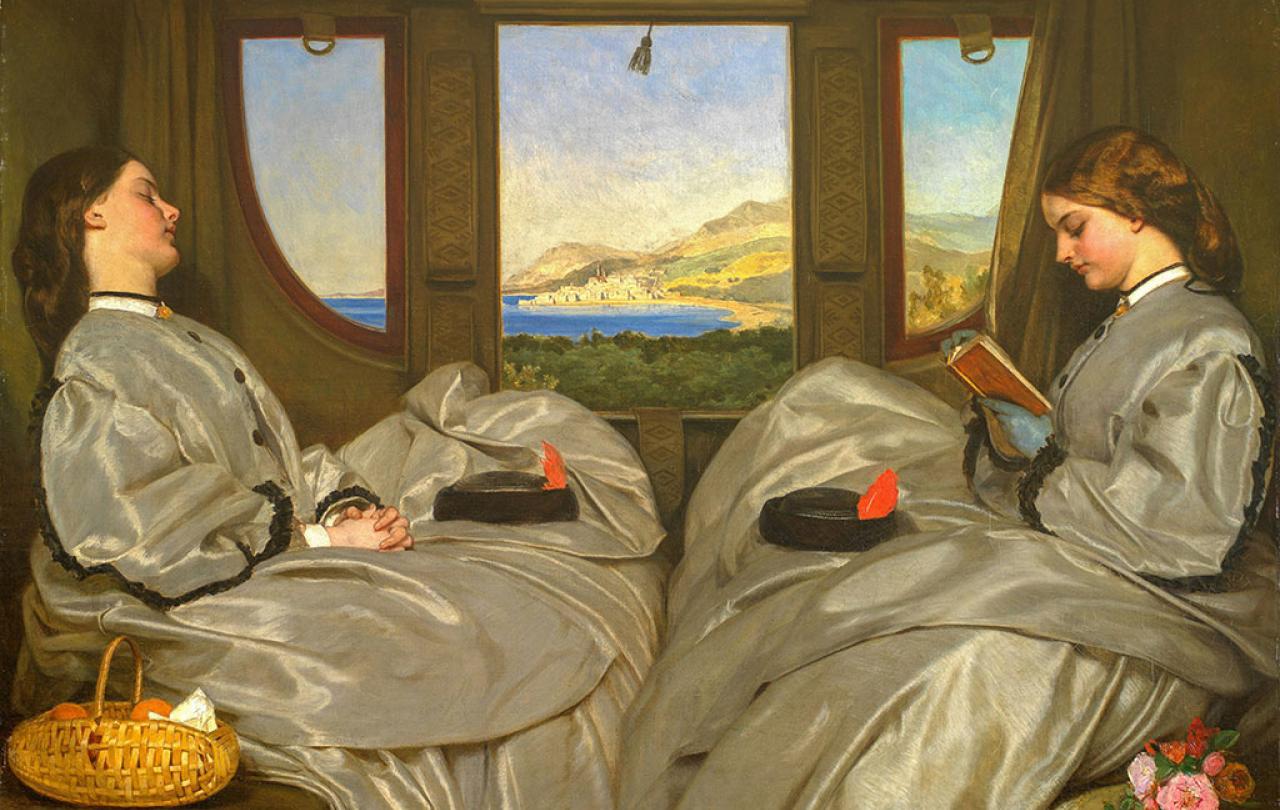Melanie Öhlenbach has argued that ‘Runge's life, his theory and works bear testimony to Böhme's importance’. For Runge, art ‘is considered as the revelation of God and the artist as its tool, while the artist's imagination creates the insight of God’. He believed it is ‘the artists' duty to re-create the diverging harmony of man and cosmos in the sense of an artistic-spiritual revolution’. She writes that due to his early death, ‘Runge managed only partly to put his ambitions into practice’, notably in his Times of Day series which represent not only the changing times of day, but the seasons, the ages of humanity and historical epochs. Similarly, Friedrich’s seven sepia drawings The Ages of Man are thought to be inspired by Runge’s interest in visual representations of time, meaning that this exquisitely delicate series is associated with the themes of change in nature, the cyclical representation of time and the temporality of human life.
The significance of these artists is, in part, as prophets within the Christian tradition. Lucy Winkett has noted that ‘Blake’s faith was in the Jesus whom he believed the Church had abandoned’. As a result, ‘he was — and still is — an internal rather than external critic of the way in which the Christian faith is practised by its adherents; and so, for those who have ears to hear, his is a prophetic rather than destructive force within the Christian tradition’. Richard A. Rosengarten states that ‘Blake wanted to stir things up because he thought the Christian revelation was meant to stir things up’. He argues that, for Blake, the ‘first step in doing so (after reading the Bible from stem to stern) was to liberate Imagination from the shackles of Reason’. This is what ‘could make us fully human again, and thus much more approximately the creatures of God that we truly are’.
Malcolm Guite suggests that both Blake and Coleridge: ‘recognised Jesus as the Divine Imagination and Love bodied forth for us and kindling afresh in us the love and imagination which is God’s lost image deep in our souls. Both men were calling for England (‘Albion’ in Blakes terms) to awaken from the sleep of materialism, greed and conquest, and to be renewed in Christ through an awakening of the spiritual imagination.’
This exhibition demonstrates that many of great Romantic philosophers and writers were seeking just such a spiritual regeneration and national revival. In our own time of war, revolution and political turbulence, it may be that this is a prescient exhibition bringing us artists who, as Winkett said of Blake, have ‘a distinctively Christian voice for our time’.
In Jerusalem, one of Blake’s illuminated books from which many plates are shown in this exhibition, Blake writes: ‘I know of no other Christianity and of no other Gospel than the liberty both of body and mind to exercise the Divine Arts of Imagination – Imagination, the real & eternal World of which this Vegetable Universe is but a faint shadow, & in which we shall live in our Eternal or Imaginative Bodies when these Vegetable Mortal Bodies are no more.’
William Blake’s Universe, 23 February 2024 - 19 May 2024, Fitzwilliam Museum.


